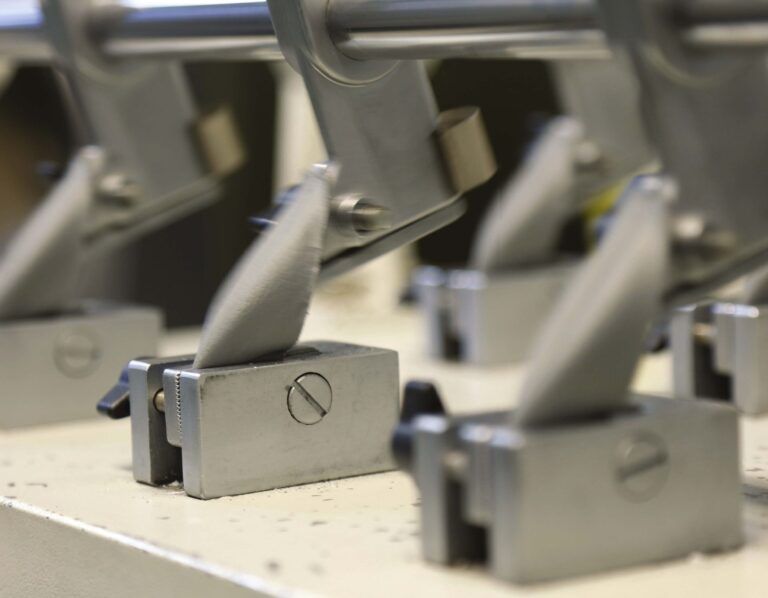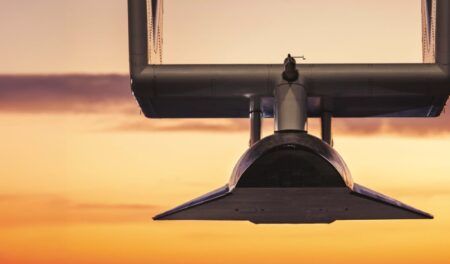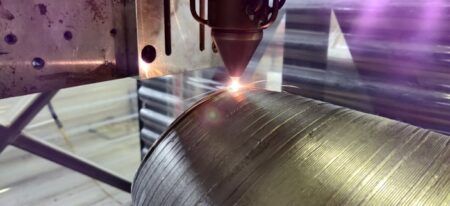Airliner cabins contain an array of materials including adhesives, coatings, composites, electronic components, metals, plastics and textiles, all tested for compliance to strict regulations. Add private and VIP jet cabins into the mix and the scope widens thanks to the often exotic items that corporations, heads of state and wealthy individuals specify for their bespoke cabins.
Federal Aviation Regulation 25.853 is one of the industry’s key guides, setting flammability standards for cabin materials. Gen Phoenix supplies leather for airliner seat covers and its product is unusual.
“All our materials designed for aviation undergo rigorous safety and compliance testing to meet or exceed global industry standards, including flammability, heat release, smoke density, and toxicity requirements,” says Nico Den Ouden, chief innovation officer. “These tests are performed in certified third-party labs, often in accordance with standards including Federal Aviation Regulation 25.853.”
Gen Phoenix manufactures its leather product from wet blue leather trimmings and shavings, products of the traditional leather tanning process which otherwise go to landfill or are incinerated. It reduces the feedstock to individual fibers before reconstituting it into what Den Ouden describes as “engineered leather.”
“It behaves differently to traditional leather,” he says. “Engineered leather can be tailored at the fiber and composite level, allowing us to optimize performance for fire safety and ensure consistency across every production batch, something that’s harder to guarantee with natural hides.”
PAINT & COATINGS
Coatings, including paint and a variety of textured finishes, are so prevalent throughout the cabin they are easily overlooked. Sherwin-Williams Aerospace manufactures a wide variety of aircraft cabin, exterior and structure coatings.
“Everything in the pressurized portion of the aircraft, including the cabin and cargo areas, must meet those Federal Aviation Regulation requirements,” says Grant Semanskee, aerospace account executive at Sherwin- Williams. “We test our products and then the OEMs test composites, honeycomb and other materials finished with our coatings against their own specifications. Later in an aircraft’s career, if those components are refurbished they must be treated with the same coatings, otherwise they must be retested.”
With its roots in a traditional cabinetmaking, Austria’s F/LIST specializes in materials and monuments for executive jet cabins, yachts and luxury residences. It employs a variety of regular cabin materials, more exotic items including wood and stone veneers and, increasingly, materials developed in-house for sustainability and their potential for recycling.

“We test completed products once we’ve established that all components are airworthy to the relevant certification standards,” explains Patrick Domnanich, F/LIST director research and development. F/LIST product test reports regularly run to 100 pages or more, detailing tests for flammability, durability analyzing for stretch resistance, strength, scratch resistance and more, with working parts subject to repetitive test to establish longevity, heat and humidity up to 98%, cycling up and down to emulate temperature fluctuation, ultraviolet damage since discoloration is a significant issue, and damage from liquids and chemicals, including acid and alkaline food spills, with lemon juice, tea, coffee and wine among them.
“We have in-house facilities for all testing,” Domnanich adds. “This enables us to trial finished products and makes for agile development with quick iterations and reduced response times to customer requests. In-house validation testing means we know that what we’re supplying is airworthy before we deliver to our customers.”
Wood veneers have an important place in many private jet cabins and Domnanich remarks upon F/LIST’s database on tree species that it has pre-tested. “With 20 years of experience in aviation, we are rarely asked to specify a type of wood that we haven’t previously tested,” he says. “When we receive such a request, we build up a flammability sample and test onsite in one of our chambers. Strips of the material are exposed to a flame for 60 seconds. The extent of damage suffered, the time it takes for the material to extinguish after the flame is removed and the dripping of burning material must be minimal.”

SCUFFS AND STAINS
Safety is the primary driver in cabin materials testing, but manufacturers must also prove their products’ ability to resist scuffs and stains in daily and typically heavy use. Airliner seats, for example, are occupied for many hours every day, cleaned regularly and must take knocks and spills in their stride.
“Durability is a cornerstone of the Gen Phoenix offer, proven through a range of performance tests, including Martindale abrasion, flex resistance, ultraviolet stability and colorfastness to light and rubbing,” Den Ouden says.
“We also test compatibility with aviation-grade cleaning agents, simulating repeated exposure over the material’s lifetime. In ingress/egress simulations, mimicking years of passenger movement, our seat cover materials have shown minimal signs of wear, even after more than ten years of simulated use.”
Stain resistance is another, perhaps less obvious challenge, with the worst offending contaminants including coffee, curry powder, ink, ketchup, lipstick, mustard, red wine, shoe polish and sunscreen. “Testing is conducted over a 12-hour period, with assessment focused on staining and surface degradation,” Den Ouden says. “Additionally, a broad selection of typical cleaners and sanitizers has been screened for compatibility using various methods to confirm that the surface finish and overall integrity of the product remain unaffected.”
“Our textile surfaces undergo abrasion and aggressive light-fading tests, and we assess color fastness to rubbing and water, ensuring color doesn’t leach on to garments or skin,” Domnanich says. “We always check that ingredients meet the highest standards when it comes to human health too.”
Sherwin-Williams proves the resilience of its coatings against fluids and staining. “Our performance testing ensures a coating’s longevity,” says Julie Voisin, market segment manager, aerospace, original equipment automotive interiors and commercial vehicle refinish at the company. “We assess how stains will clean off and whether the cleaning process will damage the coating. We have decades’ worth of data on the performance of our Polane L coating, manufactured to Boeing’s BMS 10-83N specification and used in the most difficult, high-traffic cabin areas, showing its resilience in testing and daily use.”

NEW AND EXOTIC MATERIALS
Gen Phoenix is taking its engineered leather to new heights with a completely circular production process. Generating an identical product to that produced by today’s wet blue feedstock, the new concept recycles used leather into new material. The feedstock could be leather from aircraft seat covers, post-consumer clothing, accessories and footwear, or even Gen Phoenix’s own product at end of life.
“Before any new material stream is adopted, it undergoes extensive R&D and validation to ensure compatibility with our manufacturing platform and to maintain consistent downstream performance,” Den Ouden explains. “Our system requires all incoming feedstock to be processed to a defined specification in terms of fiber structure, chemical treatment and contamination level. This enables us to create a high-quality, consistent material regardless of the original product’s prior use.”

Any product incorporating new feedstocks then undergoes a full requalification process, which includes repeating all necessary safety and performance tests to ensure continued compliance in aviation and other regulated industries. “Our qualification protocols for new feedstocks are guided by market requirements and may involve laboratory testing and simulated use to evaluate factors including durability, fire performance and tactile properties,” Den Ouden says. “Additionally, chemical characterization will be conducted to ensure the ongoing consistency of incoming materials.”
In its quest for sustainable, even circular cabin materials, F/LIST has developed a range of biomaterials, often incorporating waste products, and unique cabin monuments. The company’s Shapeshifter products perform seemingly magical manipulations with wood and other materials. “We created new actuation mechanisms, which in turn required the development of new testing equipment, for our pneumatic actuation, for example,” Domnanich says. “The work included design and development of printed circuit boards and software for the actuation logic and the testing station.”
The new materials effort employs an interdisciplinary team of chemists, wood scientists, textile and sustainability experts, and F/LIST also works with partners in the fashion and automotive industries to bring their material technologies into aircraft cabins. Whatever the material, Domnanich says validation is extremely rigorous.
“Our benchmark is the performance of today’s conventional materials, because customers will not compromise on durability,” he says. “We conduct chemical, mechanical and flammability testing, as well as testing how materials perform in an application. A sustainable leather alternative must be tested for elasticity, wrinkling behavior and color stability for example.
“The challenge with sustainable materials is not so much the chemistry but more in securing reliable and verifiable raw material streams. Controls and tests ensure raw materials, which are frequently plant-based and inherently variable, meet aircraft requirements.”
Considering the potential for business and VIP jet cabins to include a wide variety of traditional aviation materials and exotics in combination, the process of ensuring and documenting compliance presents its own challenges. Camber Aviation Management oversees cabin completion and refurbishment projects, with a particular emphasis on bizliners, typified by the Airbus ACJ and Boeing BBJ airliner-based VIP aircraft.
“In any VIP or VVIP completion, there’s a very clear regulatory framework,” says Tom Chatfield, Camber’s CEO. “Responsibility for ensuring all materials pass the required tests rests with the completion center that sources certified materials and ensures they fulfill regulatory requirements. The work required to prove compliance includes various burn tests, applicable for each batch of material as well as different material build-ups.”
As completion manager, Camber acts as the client’s advocate in this process, ensuring the completion center’s approach is thorough, transparent and properly documented. “We review test results, verify the traceability of materials, and make sure nothing slips through the cracks,” Chatfield says. “The results of these tests form part of the aircraft’s certification and, ultimately, delivery package.”
VIP clients frequently want exotic woods, textiles and other materials they have seen in luxury homes or yachts for their aircraft cabins. “Even a seemingly harmless finish might produce unacceptable smoke density or toxic emissions,” Chatfield cautions.
“That’s why testing, and often reformulation or substitution, is essential.”
Completion centers must also account for differences in regulation based on passenger capacity. “Business jets and commercial airliners converted into large bizliners must meet the same overarching safety standards for flammability, smoke density and toxicity for interior materials as defined by regulations including Federal Aviation Regulation 25.853,” Chatfield says. “However, the scale and complexity differ. The requirements for flammability change considerably between cabins designed for 19 or fewer passengers and those designed for 20 or more, with the latter far more stringent. The ACJ and BBJ platforms therefore bring additional certification requirements, potentially broadening the testing scope, and more rigorous documentation, especially when local authorities are involved in the approval process.”
Chatfield says that in complex VIP completions assumptions over testing and compliance occasionally arise, especially when a center deals with new suppliers or highly customized features. Recognizing that safety is always the critical factor, his further comments on such assumptions resonate across the aviation industry.
“It’s why oversight like ours matters,” he says. “We maintain independent tracking and reviews to ensure no material is installed without clear, traceable proof of compliance, safeguarding the owner’s investment, the aircraft’s long-term value and safety.”





